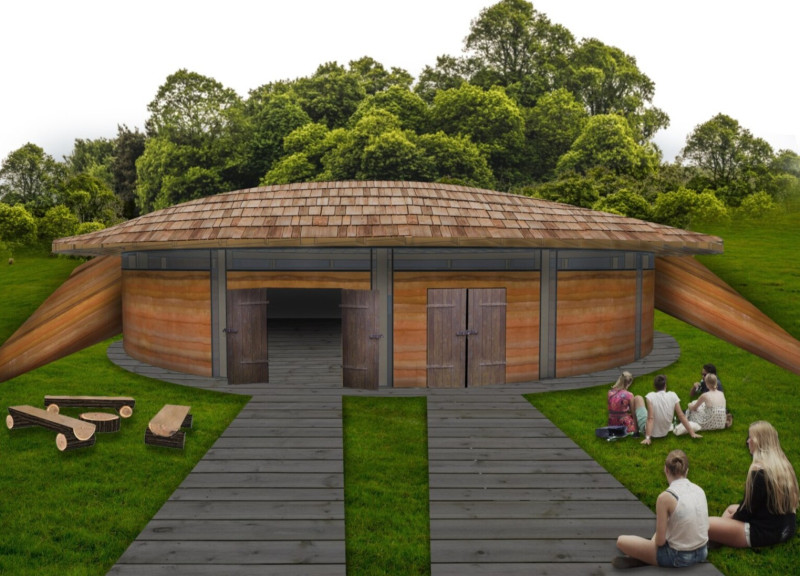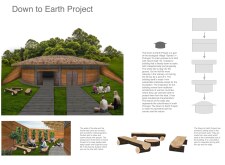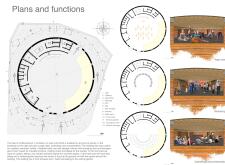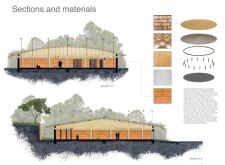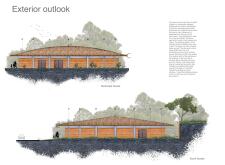5 key facts about this project
The Down to Earth Project is located in the ecological village Spirala in Portugal, designed to promote a close connection to nature. It serves as a community space that accommodates a variety of activities and events. The design aims to integrate the building with its surroundings, creating an environment where occupants can fully appreciate the natural landscape.
SUSTAINABLE MATERIALS USAGE
Rammed earth forms the walls of the building, chosen for its sustainability and excellent insulation properties. This choice helps maintain comfortable indoor temperatures in the warm climate of the region. The color of the rammed earth also reflects the vibrant tones of northern Portugal, making the structure visually aligned with its environment.
STRUCTURAL ELEMENTS
Wood plays a significant role in the structure. Beams and columns made of wood provide the necessary strength while adding warmth to the overall look of the design. The roof is finished with wooden tiles, contributing to a cozy atmosphere inside the space. This consistent use of wood creates a unified design aesthetic throughout the building.
OUTDOOR ENGAGEMENT
Vertical gardens are included to enhance the overall environment. These gardens serve various purposes, including improving biodiversity and offering areas for relaxation. By incorporating greenery into the design, the project promotes a sense of calm and well-being among users, connecting them to the natural world around them.
COMMUNITY FOCUSED SPACES
Inside, the main hall acts as the central gathering area, while additional spaces include a gallery, wardrobe, and toilets, making the building accessible for everyone, including those with disabilities. A bar with storage and a kitchen support catering needs for events. Outdoor seating areas, equipped with raw wooden benches, encourage social interaction.
Two front entrances and a back exit lead to the vertical gardens, enhancing accessibility and encouraging people to flow through the space. This design intends to create a welcoming atmosphere for the community.


